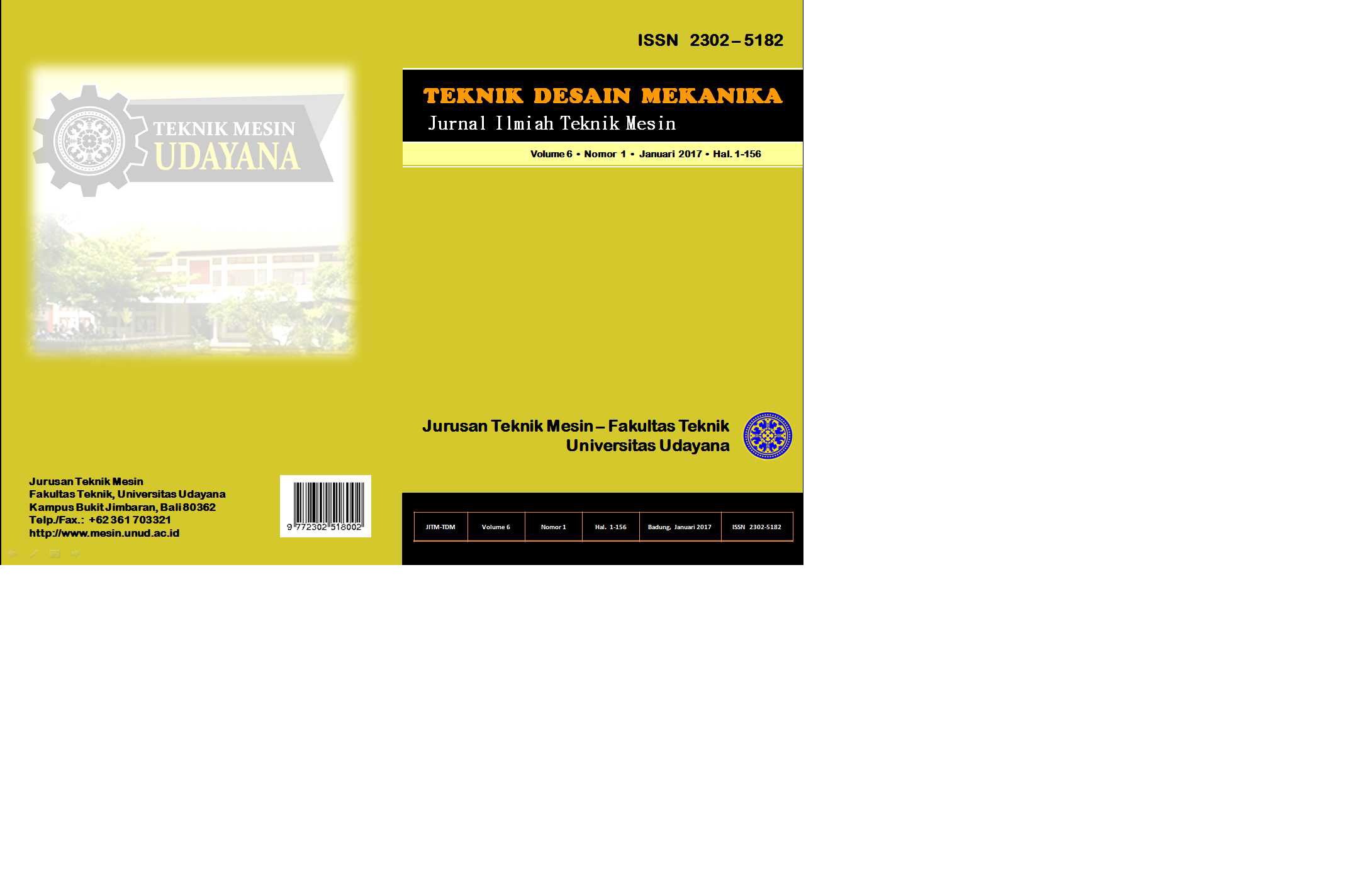Kekuatan Tarik Dan Kekerasan Sambungan Las Baja ST 37 Dengan Menggunakan Variasi Elektroda
Abstrak
Abstrak
Definisi pengelasan menurut DIN (Deutsche Industrie Normen) adalah ikatan metalurgi pada sambungan logam atau logam
paduan yang dilaksanakan dalam keadaan lumer atau cair. Dengan kata lain, las adalah sambungan setempat dari beberapa
batang logam dengan menggunakan energi panas. Dalam proses penyambungan ini adakalanya disertai dengan tekanan dan
material tambahan (filler material). Pengujian yang dilakukan adalah uji tarik dan kekerasan vickers. Elektroda yang
digunakan tipe E 6013 dan E 7016, jarak pengisi logam las 2mm dengan sudut 60?. Proses pengelasan pada material ST 37
dengan posisi horisontal dan arus konstan 120A. Sebagai evaluasi dari sambungan las digunakan Non Destructive Testing
(NDT), NDT yang digunakan adalah NDT Radiografi dan Ultrasonik.Pada jenis elektroda E 6013 nilai kekuatan tarik lebih
tinggi dengan nilai kekuatan tariknya yaitu ?u=38,166 kg/mm2 sedangkan untuk jenis elektroda E 7016 nilai kekuatan
tariknya ?u=37,514 kg/mm2 selisih nilai kekuatan tarik sebesar 0,652 kg/mm2. Dari grafik nilai kekerasan vickers pada base
metal dan HAZ sama yaitu VHN rata-rata = 1,9 untuk setiap sambungan las pada jenis elektroda E 6013 dan E 7016. Nilai
kekerasan vickers pada logam las memiliki nilai terbesar , untuk jenis elektroda E 6013 yaitu VHN rata-rata = 2,2
sedangkan untuk jenis elektroda E 7016 yaitu VHN rata-rata = 2,3.Untuk evaluasi hasil las dengan menggunakan NDT
menunjukkan bahwa pada NDT radiografi menunjukkan cacat yang terjadi pada material. Sedangkan pada NDT ultrasonik
tidak menunjukkan cacat yang terjadi karena cacat pada NDT radiografi masih masuk dalam standart. Hasil uji metalografi
pada patahan spesimen uji memperlihatkan material ferrite dan pada spesimen patahan uji tarik memperlihatkan patahan
ductile.
Kata Kunci : Pengelasan, kekuatan tarik, kekerasan, NDT, cacat
Abstract
Definition of welding according to DIN (Deutsche Industrie Normen) is a metallurgical bond at the junction of the metal or
metal alloy that is carried out in the molten or liquid state. In other words, the weld is the local connection of several metal
rods by using heat energy. In this connection process is sometimes accompanied by pressure and additional material (filler
material).This experiment is tensile test and hardness vickers. Electrodes used type E 6013 and E 7016, a distance of 2 mm
weld filler metal with an angle of 60. The welding process in ST 37 material with a horizontal position and a constant current
of 120 A. As an evaluation of welded joints used Non Destructive Testing (NDT), NDT is used NDT Radiography and
Ultrasonic.On the type of electrode E 6013 value higher tensile strength with its strength values are ?u = 38.166 kg /mm2
while for the type of electrode E 7016 the value of its strength ?u = 37.514 kg / mm2 tensile strength increment of 0.652 kg /
mm2. Vickers hardness value of the graph in base metal and HAZ same that VHN average = 1.9 for each weld joints on the
type of electrode E 6013 and E 7016. vickers hardness value in the weld metal has the greatest value, for this type of
electrode E 6013 is VHN mean = 2.2, while for the type of electrode E 7016 is VHN average = 2.3. For the evaluation of
welds using NDT shows that in NDT radiography showed defects that occur in the material. While the NDT ultrasonic does
not indicate defects that occur due to defects in the radiographic NDT is still included in the standard. Metallographic test
results in the fracture test specimens showed ferrite material and the tensile test specimens fracture showed ductile fracture.
Keyword:Welding, tensile strength, hardness, NDT, defects


